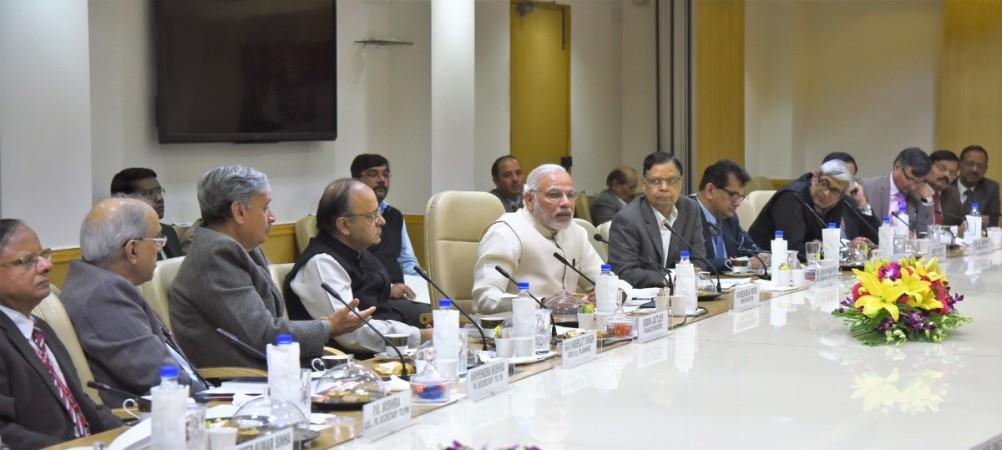
Narendra Modi, the Prime Minister of the world's fastest-growing economy, may well be on course to pip his political rivals who are critical of his demonetisation decision, besides augmenting the state exchequer at a crucial phase of the BJP-led NDA government.
Centre approves Ordinance for demonetisation
An estimate by a US-based financial services group says the windfall could be about Rs 1 lakh crore ($15 billion), giving financial leeway for the government to spend on welfare despite maintaining financial discipline.
The amount is basically the liability that would extinguish for the Reserve Bank of India (RBI) for the demonetised notes that are not returned to the system by the end of the deadline. The reduced liability of the RBI would go to the government in the form of "special dividend."
"How much can the government get by way of 'special dividend' from the RBI, clients ask, after today's reported ordinances. About Rs 1,000bn/0.6 percent of GDP, we continue to estimate," BofA Merrill Lynch Global Research said in a report on Thursday.
"If the RBI passes this as a 'special dividend' to the fisc, it will allow Budget 2017 to step up social sector spend and public investment," the report added.
The windfall, along with receipts from the second amnesty scheme for income tax defaulters launched this month, would help the government achieve the fiscal deficit target of 3.5 percent.
"On our part, we continue to expect the government to raise about Rs 1,000bn/0.7 percent of GDP of additional taxes under Income Disclosure Scheme II. This should allow Finance Minister Jaitley to hold the FY18 fiscal deficit at 3.5 percent of GDP - same as FY17's - and, at the same time, fund the 7th Pay Commission and recapitalize PSU banks, without cutting back on public capex," the report said.
The Income Disclosure Scheme II is actually the Pradhan Mantri Garib Kalyan Yojana, 2016 announced as a follow-up measure to demonetisation; defaulters will have to pay penalty and deposit money in a bank account that will be locked for four years.
"Tax @30 percent of the undisclosed income, surcharge @33 percent of tax and penalty @10 percent of such income is payable besides mandatory deposit of 25 percent of the undisclosed income in Pradhan Mantri Garib Kalyan Deposit Scheme, 2016. The deposits are interest free and have a lock-in period of four years," the finance ministry said in a statement. The scheme runs from December 17, 2016 to March 31, 2017.
The first amnesty scheme -- Income Declaration Scheme 2016 -- resulted in disclosure of huge undisclosed income when the four-month scheme ended on September 30, 2016.
"Income Declaration Scheme 2016 unearths Rs 65,250 crore of hitherto Undeclared Income and Assets; 64,275 declarations filed under IDS-2016 up to the midnight of 30th September, 2016," the finance ministry said on its official Facebook on October 1, 2016.
Based on the 45 percent tax applicable on the income disclosed according to the scheme, the government will get Rs 29,362.5 crore.
Union Finance Minister Arun Jaitley is expected to present Budget 2017 on February 1 next year, when elections are due in Uttar Pradesh, Punjab, Uttarakhand and Goa.
Modi is scheduled to address a BJP rally in Lucknow on January 2, 2017 and analysts expect him to announce sops to the people who have endured the 50-day pain in the hope of long-term gains.









!['Had denied Housefull franchise as they wanted me to wear a bikini': Tia Bajpai on turning down bold scripts [Exclusive]](https://data1.ibtimes.co.in/en/full/806605/had-denied-housefull-franchise-they-wanted-me-wear-bikini-tia-bajpai-turning-down-bold.png?w=220&h=138)



